You’re probably aware that a well-thought-out and personalized YouTube video description can help you attract more viewers and get a higher CTR.
Still, many video content creators struggle to write attention-grabbing video descriptions, especially if they upload dozens of videos every week.
To make a good video description, you have to summarize the content of the video, do keyword research, and include relevant hashtags.
Luckily, you don’t need to spend hours writing descriptions that hit the mark.
Today, we will show you 3 effective strategies on how to make a high-quality YouTube video description fast and engage viewers like crazy.
Let’s dive in.
Why do you need good YouTube video descriptions?
YouTube descriptions are texts beneath every video that summarize the content of the video and provide more info about the creators, links, and CTAs.
YouTube descriptions show both the YouTube algorithm and the viewers what is in the video.
Creating a good YouTube video description is important because of the:
- Suggested videos - The YouTube algorithm uses this information to suggest your post when someone is watching something similar.
- SEO - If the video is YouTube SEO-optimized, the algorithm might show your video when someone types the keywords you used within your title or description.
- Viewers - You have a higher chance of someone clicking on the video if they know what the video is about.
What to have in mind when writing YouTube video descriptions
1. Do keyword research
Before writing the video description, research the keywords that viewers type when searching for similar content.
If you use the right keywords in your description relevant to the video, the YouTube algorithm will push your video to the top, and people will find your video easier.
You can do keyword research by typing in the main keyword for your video on Google and see what the results are popping up.
After that, try to incorporate those keywords into your video description.
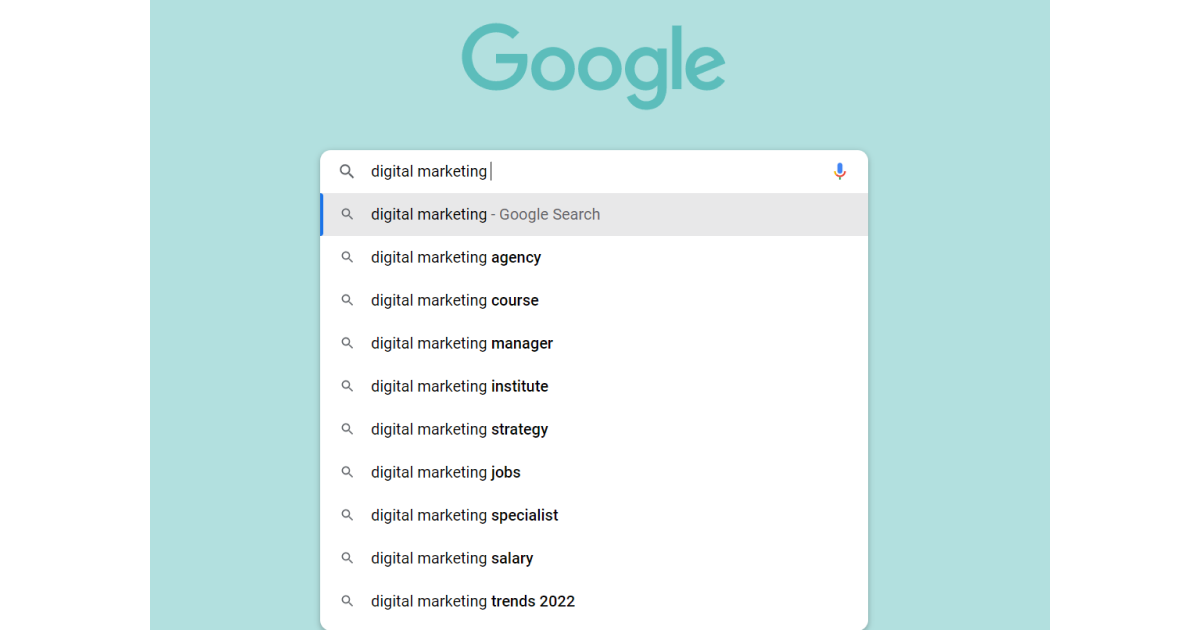
You can also use numerous online tools to do the research for you, such as Ubbersuggest, for example.
To research keywords on Ubbersuggest, all you need to do is:
1. Enter the main keyword of your video title.
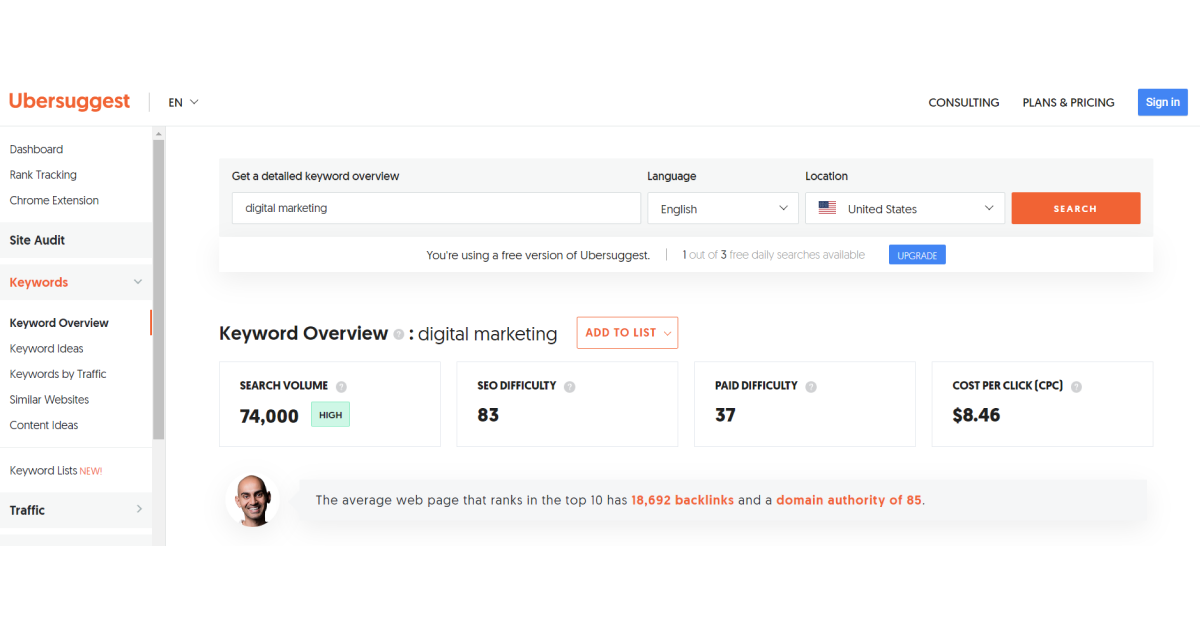
2. Click “Search” and look for keyword ideas that you can implement.
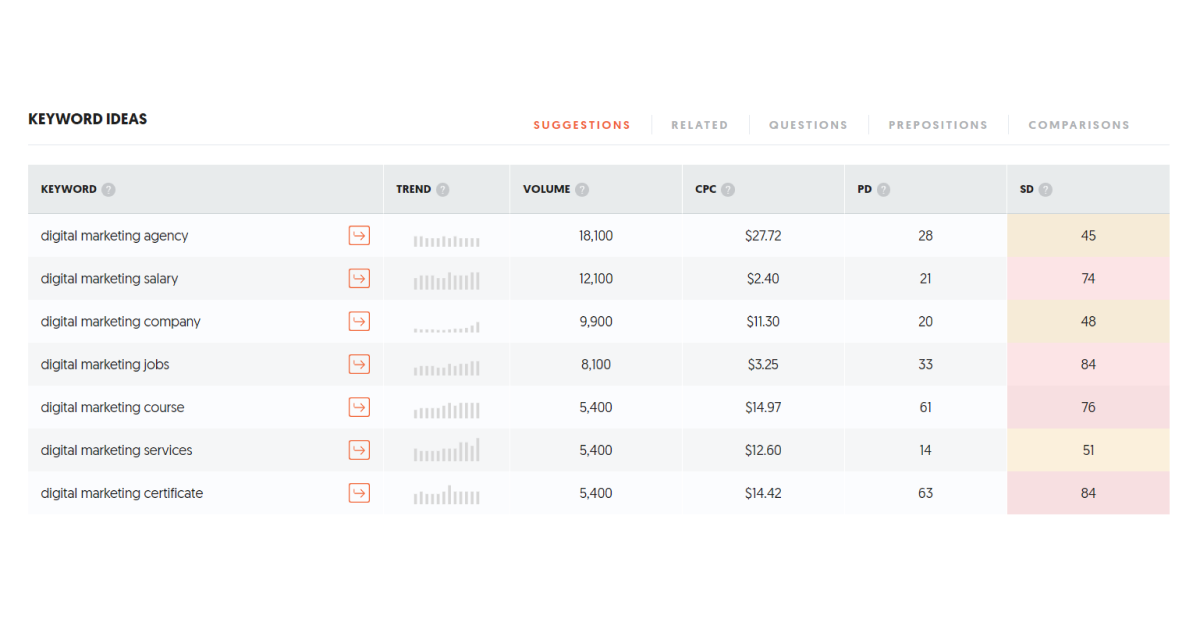
3. If you’re unsatisfied with the results, click ” Related” and find more ideas you can use.
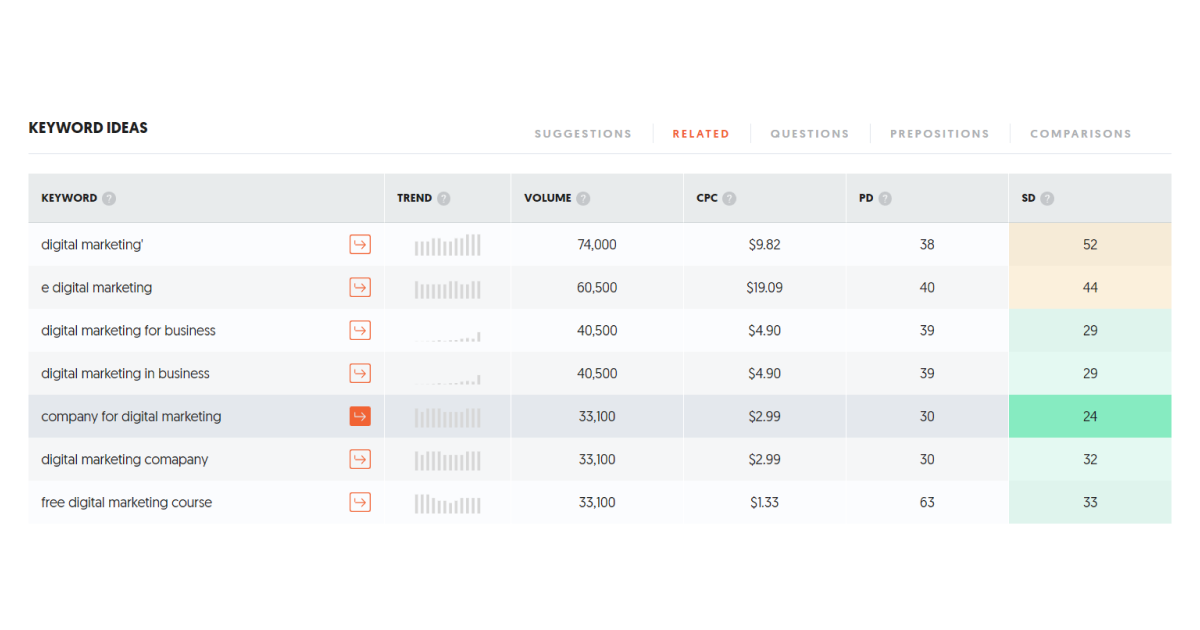
You can look for keywords within the “Related” and “ Suggestions” sections and use them in your YouTube description.
2. Keep it short
Keep your video description at around 125 characters if you want to hook your readers to watch the video.
Therefore, don’t tell everything they will see in the video, just the main points.
Here is an example of a good short video description:
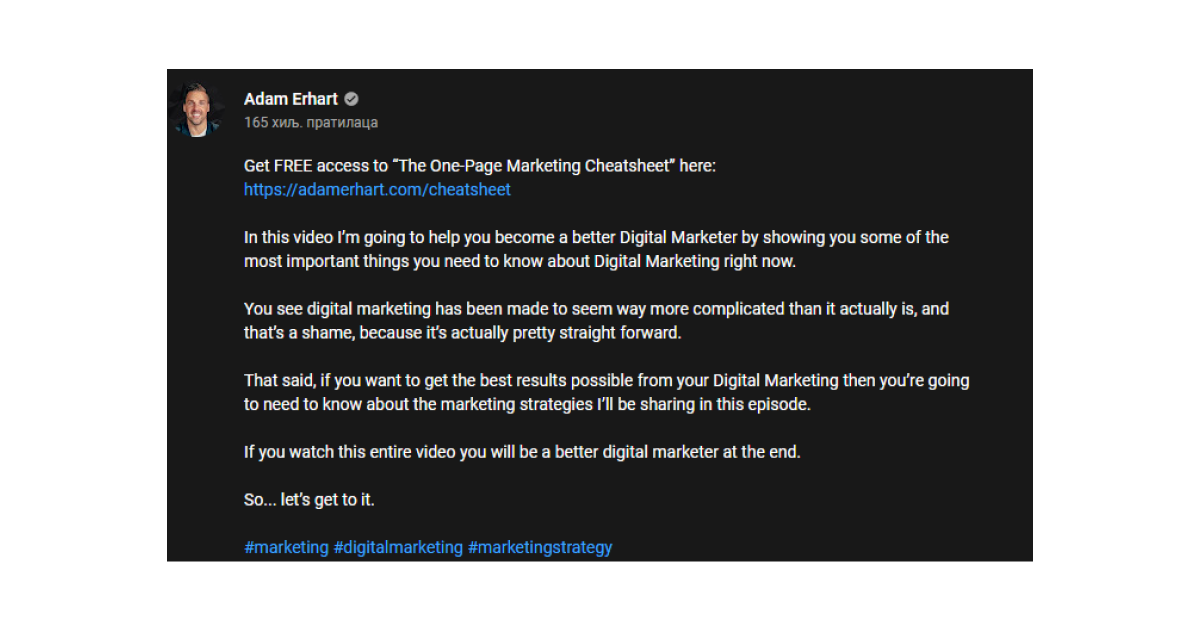
The description has several lines describing what the viewers can expect and what they will feel after watching the video.
To keep it short, you can:
- Write how this video can help your readers instead of telling what you’ve talked about in the video.
- Write what the results will be if they follow your tips from the video.
- Use 2-3 most relevant keywords, so your sentences don’t get too complicated.
- Remove all words that don’t have meaning to the reader, like “ very” or “ definitely.”
3. Provide a CTA
You can use the space for the video description to promote other videos, social profiles, or any other services.
A CTA at the end of the description is a great way to inform your viewers where they can find out more or contact you.
This way, you can provide extra value to your viewers, so they won’t just watch the video and leave.
Here is a great example of a CTA:
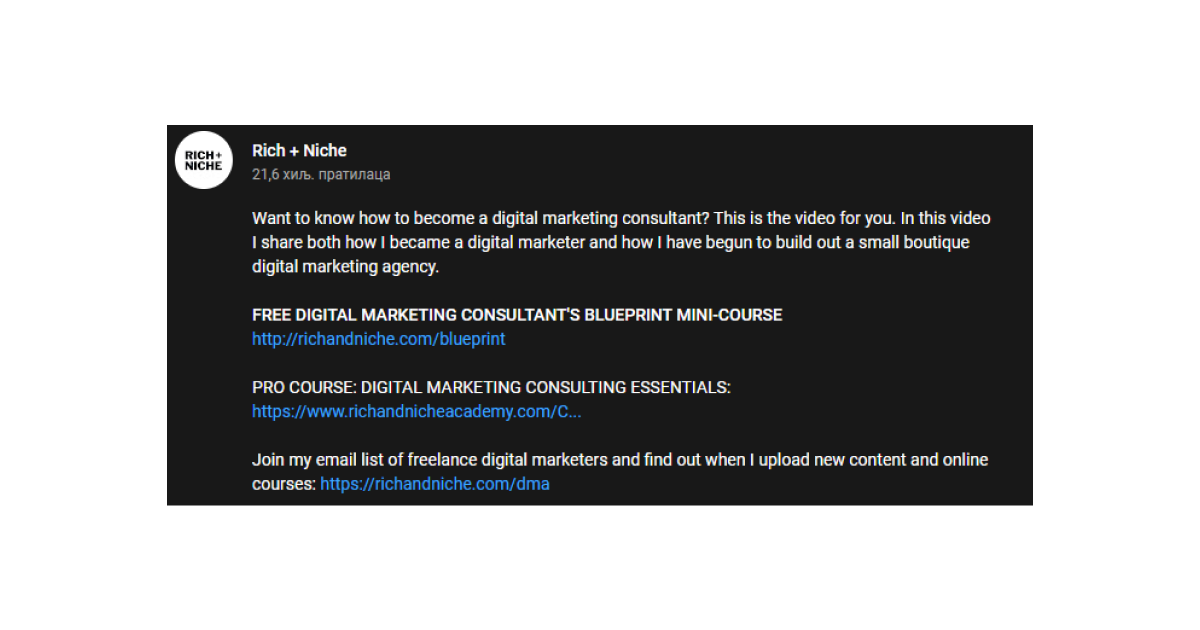
In this example, the creator provides the link to his mini-courses and an email link so people who found the video helpful can become his next leads.
If you don’t put any CTA in your descriptions, then the viewers will probably leave. Instead, tell them what to do.
4. Use a timeline
People want to get information as fast as possible, that is one downside of long videos.
Some viewers just want to get one piece of information, so they don’t want to watch a 15min video when they can Google it for 15 seconds.
Still, if you put a timeline and describe what you will talk about in each section, your viewers can skip to the part they need.
By doing this, you will describe the content of the video shortly, which can help viewers get their information faster.
Here is an example of a timeline in a YouTube video description:
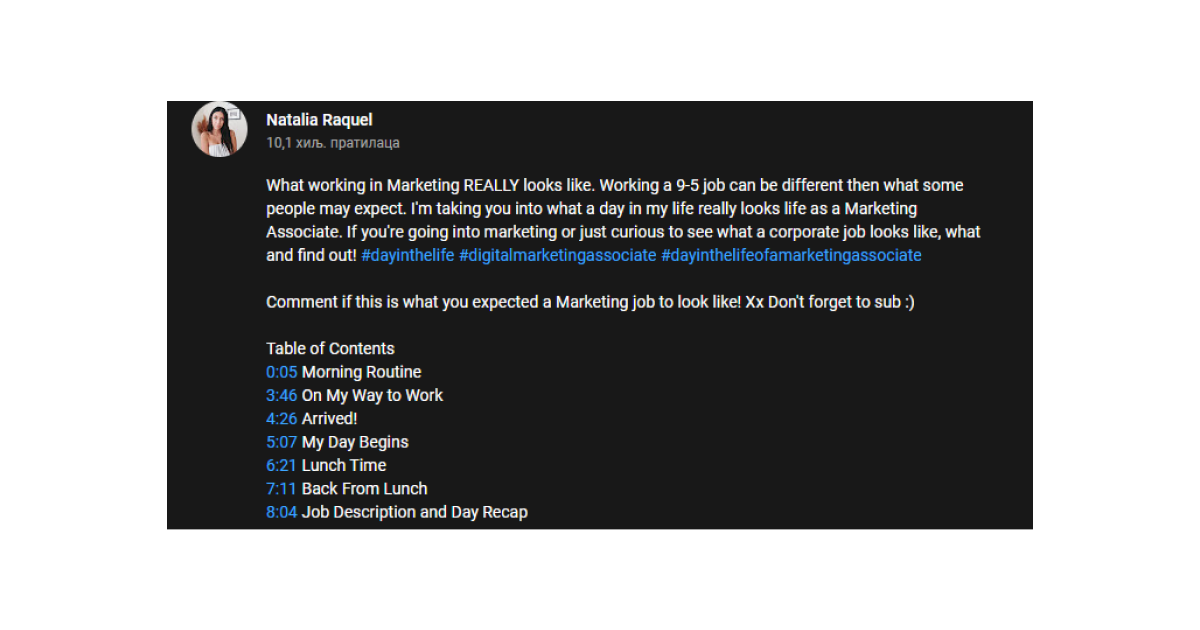
If you don’t want to or don’t have time to create YouTube video descriptions from scratch, here are 3 strategies you can use to speed up the process.
3 effective strategies to create YouTube video descriptions
1. Use AI YouTube generators
The easiest way to create killer YouTube video descriptions is by using an AI Youtube generator.
There are many YouTube generators online, but not all have the option or can create engaging and optimized YouTube descriptions.
That’s what TextCortex can help you with.
TextCortex is an AI writing tool that can help you create video descriptions for YouTube videos in only a few minutes.
TextCortex generates 100% original content that you can use as a video description based on your input and trained use-case models.
With a template specifically designed for YouTube captions, you won’t waste time writing dozens of descriptions every day.
All you need to do is:
- Enter Creator Suite and choose the “ YouTube description” template
- Enter the video title
- Enter the keywords your description needs to contain
- Click “Create” and wait a few seconds until it generates a description for your needs
If the first output is short, you can click “Extend text” below the text box, and TextCortex will generate a longer one.
This strategy is great because using an AI YouTube description generator allows you to invest more time creating and editing your video.
2. Make a template and fill in the gaps
Posting a lot of videos means writing many video descriptions. You can speed up the process by making your own template that you will use whenever you’re creating descriptions.
Make sure your template has all the necessary parts of a video description, such as:
- 1st part - Summary of the video
- 2nd part - Timeline of the video
- 3rd part - CTA (Subscribe, follow, etc.)
- 4th part - Resources (more videos, e-book)
- 5th part - Let’s connect (social media links)
- 6th part - Short self-information
Here is an example of a template you can use:
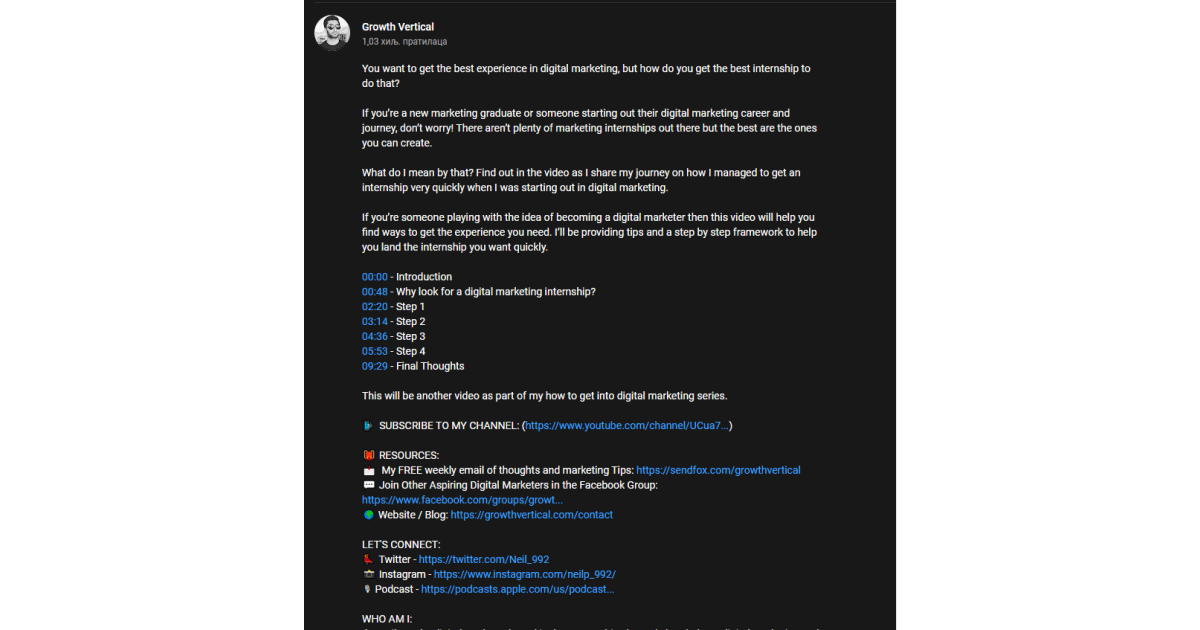
You can use the 3-6 steps for every video, and just change the 1st and 2nd parts.
This strategy is good because it will speed up your writing process by ensuring you write most of the descriptions only once.
3. Research similar video descriptions and rewrite them
If you have writer’s block and don’t know how to write a description, you can always check out what your competitors are doing.
By seeing a couple of video descriptions on a similar or the same topic as yours, you will get an idea of what CTAs, keywords, and links you can provide.
Then you can get inspiration and write from scratch or rewrite them.
This is a good strategy because you can analyze your competition and position your videos at the top by rewriting content.
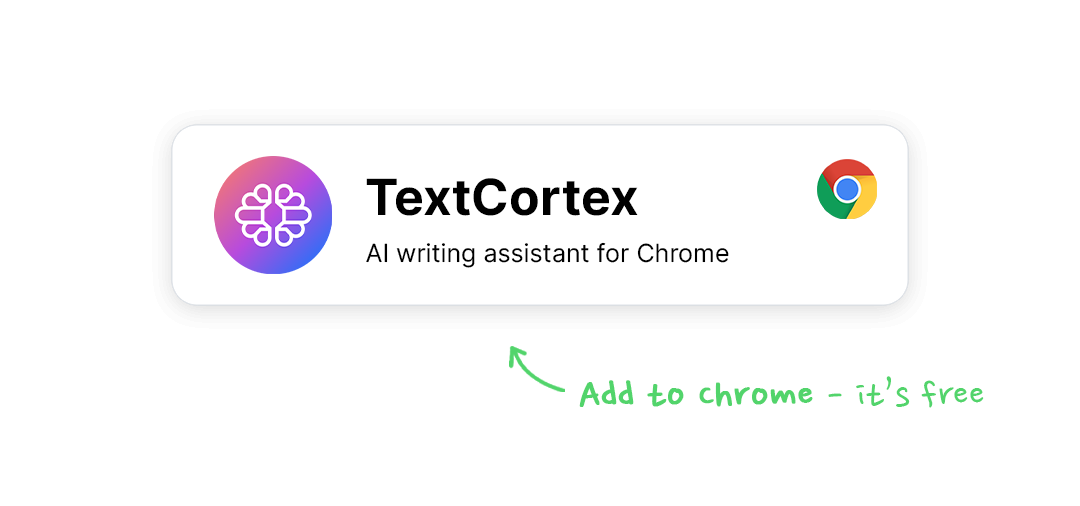
Conclusion
Creating great YouTube video descriptions that will rank well and attract the right audience requires research and extensive writing.
Yet, as a video content creator, you don’t want to waste time writing but invest that time in filming and editing.
That is why we created TextCortex.
TextCortex is an AI writing tool that can help you create killer video descriptions x7 faster than usual.
TextCortex can help you write numerous descriptions daily, but you can also use this tool to write:
- Blog posts - Create blog posts from scratch without spending hours researching and writing.
- Social media captions - Generate captions for different social media platforms within a single tool.
- Emails - Create email campaigns with a high-open rate in a few clicks.
Using TextCortex, you can focus on creating videos while we cover the textual creation process.
Sign up for TextCortex for free, and use 15 daily credits to create attention-grabbing captions in a couple of seconds.
.jpg)
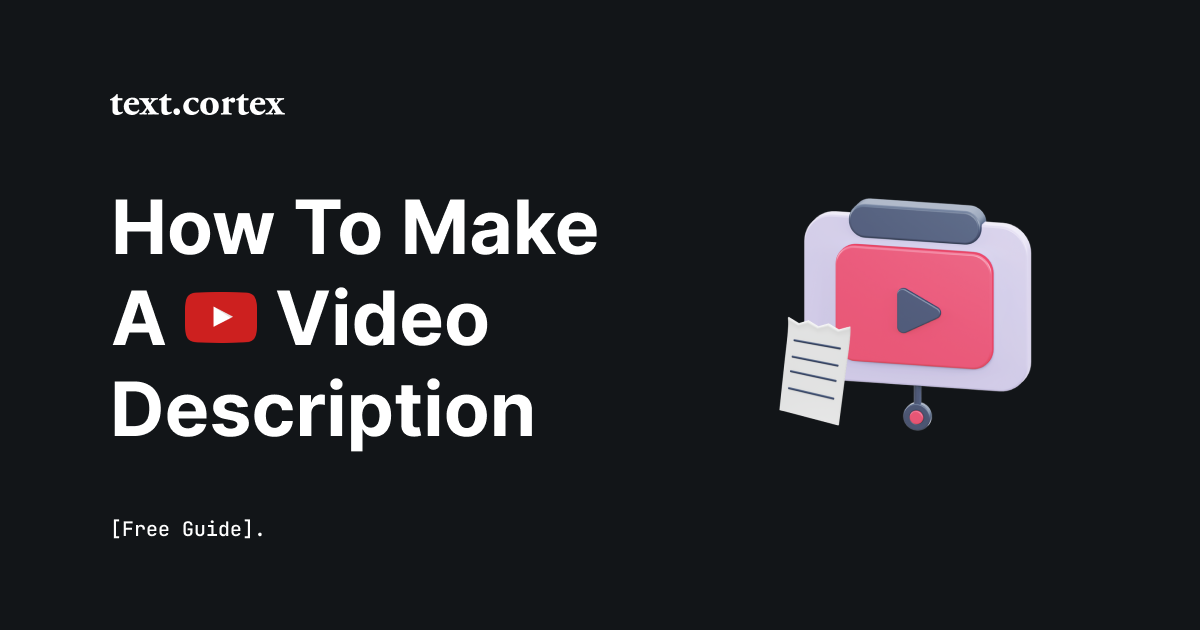
%20(36).png)

%20(35).png)
%20(16).png)